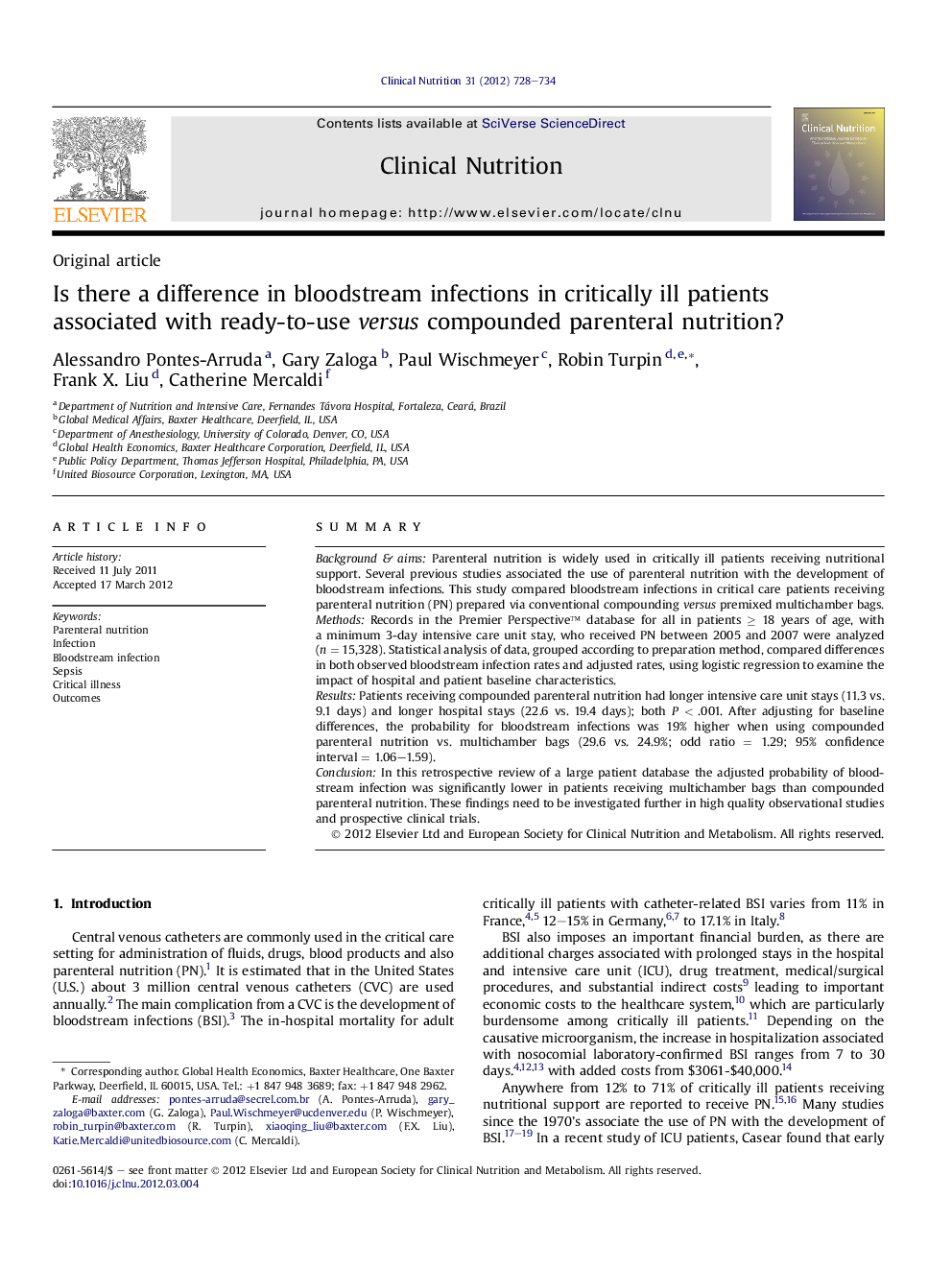| Article ID | Journal | Published Year | Pages | File Type |
|---|---|---|---|---|
| 2687147 | Clinical Nutrition | 2012 | 7 Pages |
SummaryBackground & aimsParenteral nutrition is widely used in critically ill patients receiving nutritional support. Several previous studies associated the use of parenteral nutrition with the development of bloodstream infections. This study compared bloodstream infections in critical care patients receiving parenteral nutrition (PN) prepared via conventional compounding versus premixed multichamber bags.MethodsRecords in the Premier Perspective™ database for all in patients ≥ 18 years of age, with a minimum 3-day intensive care unit stay, who received PN between 2005 and 2007 were analyzed (n = 15,328). Statistical analysis of data, grouped according to preparation method, compared differences in both observed bloodstream infection rates and adjusted rates, using logistic regression to examine the impact of hospital and patient baseline characteristics.ResultsPatients receiving compounded parenteral nutrition had longer intensive care unit stays (11.3 vs. 9.1 days) and longer hospital stays (22.6 vs. 19.4 days); both P < .001. After adjusting for baseline differences, the probability for bloodstream infections was 19% higher when using compounded parenteral nutrition vs. multichamber bags (29.6 vs. 24.9%; odd ratio = 1.29; 95% confidence interval = 1.06–1.59).ConclusionIn this retrospective review of a large patient database the adjusted probability of bloodstream infection was significantly lower in patients receiving multichamber bags than compounded parenteral nutrition. These findings need to be investigated further in high quality observational studies and prospective clinical trials.
